- Yokohama-shi Top Page
- Municipal Government Information
- Public Relations, Public Information, News
- Public Relations and Publications
- Public Relations Printed Materials
- Public information Yokohama
- Public information Yokohama-shi version
- Discover Yokohama Aya
- October 2024 issue Yokohama streetcar preservation hall where you can immerse yourself in retro mood-New model diorama "Hama diorama" is born
Here's the text.
October 2024 issue Yokohama streetcar preservation hall where you can immerse yourself in retro mood-New model diorama "Hama diorama" is born
Yokohama with sea, port, greenery, history, region, people and various attractions. We will deliver the color of this city as "Yokohama Aya Discovery". This time, on October 14th, the railway day is from the Yokohama Tram Preservation Museum (Isogo Ward).
Last Updated November 1, 2024
As for the publication contents of "public information Yokohama" October, 2024 issue "Yokohama Aya discovery", please see link.
Yokohama Ciden Preservation Museum, where you can immerse yourself in a retro mood - A new model diorama "Hama diorama" is born
Takao Muto, Director of the Yokohama Tram Preservation Museum
About Yokohama streetcar
The tram in Japan began in Kyoto in 1895 (Meiji 28). In Yokohama, it was opened on July 15, 1904 (Meiji 37) between Kanagawa and Oebashi Bridge (2.6 km). Even though it is a big city, it opened nine years after Kyoto, because the application for the opening of a railway was contested by multiple operators, and the rickshaw car husbands who were the main means of transportation in the city at that time Was the factor.
After that, the route of the tram will be extended with the expansion of Yokohama City, but the management of the Yokohama Electric Railway deteriorated due to the recession, and the tram, which has already become an important transportation infrastructure in the city, will be municipalized. It becomes. In 1921 (Daisho 10), it was the birth of Yokohama streetcars.
The Yokohama tram is nicknamed the "Chinchin Train" and is active as a citizen's foot, overcame the earthquake and war. In the 1950s, the total distance of the route was 51.79 km, 300,000 passengers a day, It is at its peak.
However, when the number of cars increases rapidly due to high growth, and when cars can enter the track of the streetcar, the streetcar running at low speeds causes traffic congestion. Also, when the Japanese National Railways (now JR) Negishi Line was opened in 1964 (Showa 39), the number of streetcar users decreased significantly. As a high-speed train runs to the suburbs and residential areas spread throughout the city area of Yokohama, the streetcar network will be limited. In this way, the streetcar, which played an active role as the center of urban transportation, ended its role and switched to subways and buses. Starting with the abolition of the Namamugi Line in 1966 (Showa 41), all streetcars were abolished on March 31, 1972 (Showa 47).
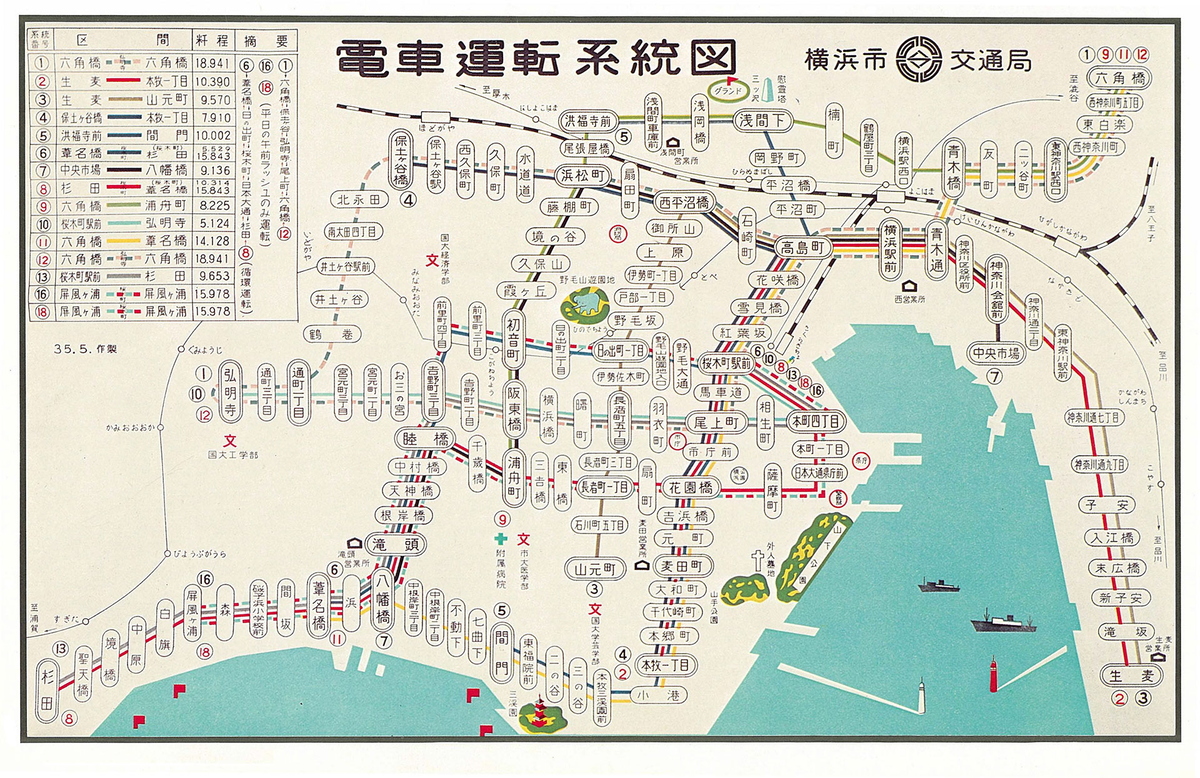
Track Operation System Diagram (1960)
After the abolition of the streetcar, many of the streetcar's driving systems were taken over by the municipal bus system.
Yokohama Tram Preservation Museum, the 51st year of its opening
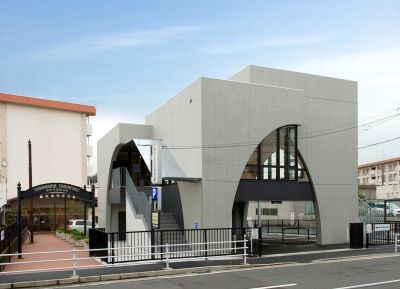
Appearance of Yokohama tram preservation hall
The Yokohama Tram Preservation Museum was opened on August 25, 1973 (Showa 48), the year after the streetcar was abolished, in Takito, Isogo-ku, to pass on the history of the streetcar to future generations.
Takigashira was the place where the head office was established when the tram was municipalized in 1921 (Daisho 10) and the electricity station (currently Transportation Bureau) was established. It is also the place where the Transportation Bureau began and the "closed history of the streetcar" lasted. Last year, in 2023 (Reiwa 5), the museum celebrated its 50th anniversary, and even now in its 51st year, valuable materials such as real streetcars, parts at that time, and photographs of streetcars running are on display. I am.
The streetcar corner where you can immerse yourself in a retro mood
In the hall, streetcars are preserved and displayed as they were at the time, so you can actually ride them. It's a very recommended place where you can immerse yourself in a nostalgic retro feeling when sitting in a seat or standing on the cabin.
Of the seven streetcars on display, the streetcar type 500 and the streetcar type 1000 are vehicles that were produced in 1928 (Showa 3) by the earthquake reconstruction plan and were about 100 years ago. Other rare vehicles include transportation of materials such as rails and uncovered wagons that carried beer from Kirin Brewery Factory in Naka Ward during the Taisho era.
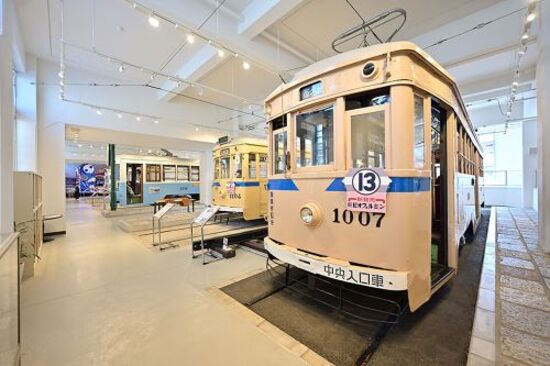 Streetcar corner
Streetcar corner
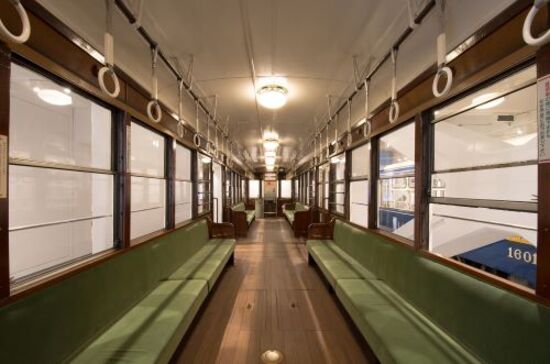 Inside the streetcar
Inside the streetcar
History Exhibition Corner on the theme of "The Development of Yokohama and Ayumi of Urban Transportation"
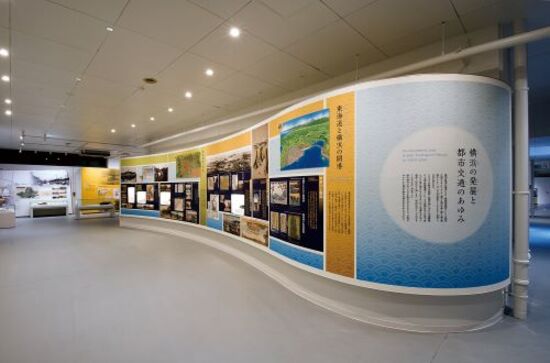
History Exhibition Corner
With the opening of the port at the end of the Tokugawa period, Yokohama began its history as an international trade city. Overcoming the earthquake and war, it has grown significantly as a heavy industrial city and then as a residential city, and continues to this day. The transportation system that supported the development and expansion of such cities was the streetcar. Its role has now been passed down to subways and buses, and has always been an indispensable part of citizens.
At the history exhibition corner, while superimposing the structure of the city Yokohama, it follows Ayumi, a city traffic centering on the streetcars, and is displayed along the following time series from (1) to (5). Please take a look at the situation of each era and the role required of streetcars in it.
(1)From the Edo era to the early Meiji era "Opening of Tokaido and Yokohama Ports"
(2)From the latter half of the Meiji era to the first half of the Taisho era "The appearance of streetcars"
(3)From the latter half of the Taisho era to the reconstruction of the earthquake and the pre-Showa era "The formation and development of Yokohama streetcars"
(4)From post-war reconstruction to high growth period “Market trains and their limits”
(5)From the latter half of the Showa era to the present "transformation of urban traffic from trams to subways"
The latest model diorama "Hama diorama"
Last year, in July 2023 (Reiwa 5), a 9.5m-long model diorama "Hama diorama" was opened to commemorate the 50th anniversary of the opening of the streetcar preservation hall.
In diorama models of major spots in Yokohama such as Minato Mirai 21 district, Sakuragicho Station, Yokohama Station, Shin-Yokohama Station, Yamate Hill, subways, trains such as subways, streetcars, Shinkansen, Negishi Line, Bayside Blue, Akai shoes, etc. Municipal buses run. There are three types of driving shows that make full use of video, lighting, and sound: "History of Yokohama Municipal Transportation", "One Day and Municipal Transportation of a certain family", and "Railways and Buses running in Yokohama". It has been held seven times (as of October 2024). We hope you will feel that trains and buses that run through the elaborate streets of Yokohama are linked to your lives.
In addition, on the wall, a chronology that expresses illustrations and texts from the era of streetcars to the era of buses and subways is displayed.
Please come to the streetcar preservation hall where you can rediscover the news of Yokohama.
 Hama diorama
Hama diorama
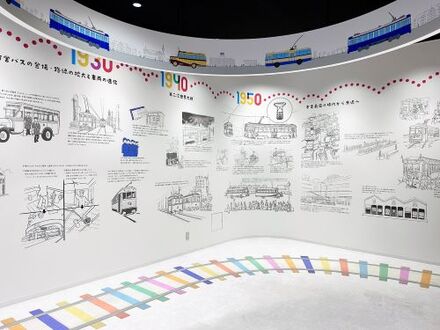 Illustration Chronology
Illustration Chronology
[Reception end] Reader present
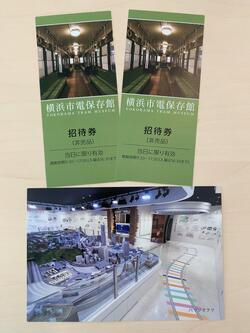
The application has been closed, and prizes have been sent to the winners on Friday, November 1st. Thank you very much for your application.
Thank you for always seeing "Public Information Yokohama" and "Yokohama Aya Discovery". We will present a set of invitation tickets and postcards to 20 sets of 40 people by lottery from those who have received their impressions. If you wish, please refer to the following six items. ※Please specify and apply by postcard (to Yokohama City Hall Policy and Management Bureau, 6-50-10 Honcho, Naka-ku, Yokohama 231-0005) or e-mail (sss-saihakken@city.yokohama.jp). The deadline must arrive on Thursday, October 31, 2024.
※ 1.Postal code, 2. Address, 3. Name, 4. Impression, 5. I would like to read, 6. "I wish to present the October issue"
The winner's announcement will be returned by sending the prize. In addition, the personal information you receive will not be used for any purpose other than sending prizes.
Public Relations Section, Policy Management Bureau, Yokohama City Hall TEL: 045-671-2331 FAX: 045-661-2351
Inquiries to this page
Yokohama tram preservation hall
Telephone: 045-754-8505
Telephone: 045-754-8505
Fax: 045-754-8507
Page ID: 818-743-959







